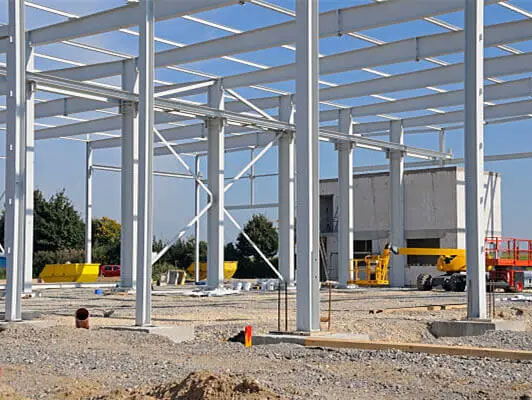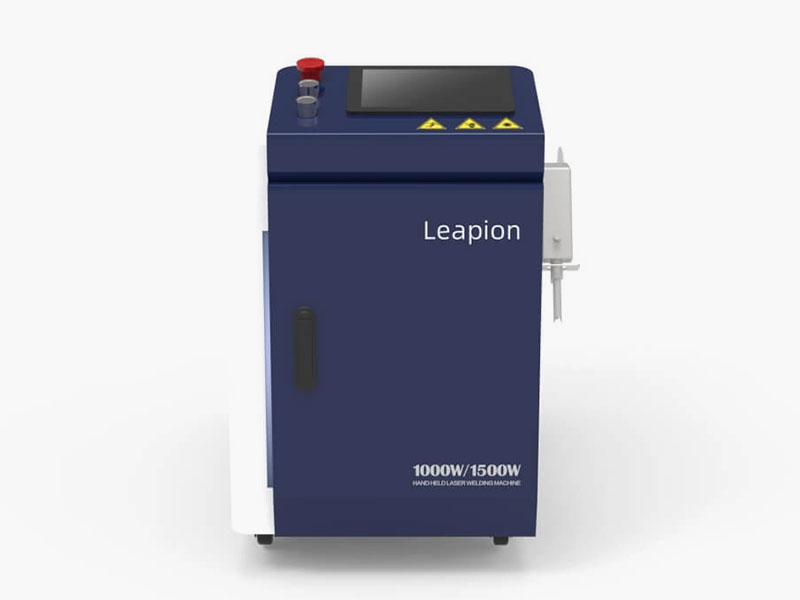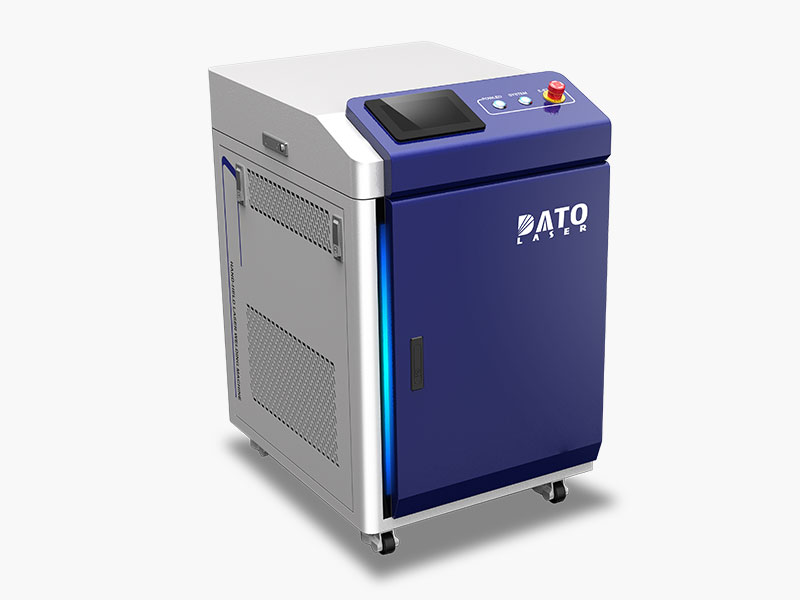Laser Welding Parameters: The Ultimate Guide to Optimizing Your Setup

Why Laser Welding Parameters Matter
Laser welding relies on concentrated light energy to fuse materials. Unlike traditional welding methods, it offers minimal heat distortion and exceptional control. However, this precision hinges on selecting the right combination of parameters. Incorrect settings can lead to defects like porosity, cracks, or incomplete fusion, compromising structural integrity. By optimizing parameters, manufacturers achieve consistent weld quality, reduce waste, and enhance productivity.
The significance of proper parameter selection cannot be overstated in modern manufacturing environments. As industries push toward lighter, stronger materials and more complex designs, the margin for error in welding processes continues to shrink. Laser welding technology has evolved dramatically since its introduction, with DATO and Leapion consistently developing more sophisticated systems that offer unprecedented control over the welding process.
For manufacturers in competitive sectors like automotive, aerospace, electronics, and medical devices, mastering laser welding parameters isn't just about quality—it's a strategic advantage that enables innovation in product design while maintaining production efficiency. The ability to join dissimilar materials, create hermetic seals, or weld heat-sensitive components opens new possibilities that conventional welding simply cannot match.
Key Laser Welding Parameters Explained
Laser Power
Laser power determines the energy delivered to the workpiece. Higher power increases penetration depth but risks overheating thinner materials. For example, welding stainless steel may require 2–4 kW, while aluminum alloys need lower power (1–3 kW) to avoid burn-through. Modern fiber laser machines, like those from DATO, allow dynamic power adjustments to balance speed and precision.
The relationship between laser power and weld quality is complex and material-dependent. In high-precision applications such as medical implant manufacturing, power settings might be as low as 20-50 watts to achieve microscopic welds without affecting adjacent components. Conversely, heavy industrial applications might utilize 6-10 kW systems to achieve deep penetration in structural steel components.
DATO's advanced fiber laser welding systems incorporate real-time power monitoring and adjustment capabilities, ensuring that energy delivery remains consistent even as environmental conditions or material properties change during the welding process. This adaptive power control is especially valuable when welding components with varying thicknesses or thermal properties.
Welding Speed
Speed affects heat input and weld geometry. Faster speeds reduce heat exposure, minimizing distortion—ideal for thin sheets or heat-sensitive alloys. Slower speeds enhance penetration for thicker materials. For instance, automotive manufacturers often use speeds of 5–10 meters per minute for sheet metal, while heavy machinery parts may require 1–3 meters per minute.
The interplay between welding speed and other parameters creates a delicate balance that experienced operators must master. Increasing speed without adjusting power can result in incomplete fusion, while decreasing speed without reducing power might cause excessive heat input leading to material degradation or excessive spatter. Modern laser welding systems from DATO and Leapion feature programmable speed profiles that can automatically adjust velocity during different segments of a weld path.
For manufacturers working with complex three-dimensional components, the ability to maintain consistent welding speed around curves and contours becomes critical. Advanced robotic laser welding systems compensate for path complexity by dynamically adjusting speed to ensure uniform energy delivery regardless of the welding trajectory.
Pulse Frequency and Duration
Pulsed lasers control energy delivery through short bursts. Frequency (Hz) determines pulses per second, while pulse duration (milliseconds) defines each burst's length. High-frequency pulses (200–500 Hz) suit fine welds on electronics, whereas longer durations (5–10 ms) improve penetration in thick components. Adjusting these parameters prevents overheating in materials like copper or titanium.
The pulsing capability of modern laser welding systems offers significant advantages for controlling heat input and managing challenging materials. For instance, when welding highly reflective materials like copper or gold, initial pulses can create a small melt pool that increases absorption for subsequent energy input, dramatically improving process efficiency. In battery manufacturing, precisely controlled pulse patterns enable welding of dissimilar metals without creating brittle intermetallic compounds that would compromise electrical performance.
DATO's advanced laser welding systems offer sophisticated pulse shaping capabilities, allowing operators to define custom energy profiles within each pulse. This technology enables precise control over the heating and cooling cycles during welding, which is particularly valuable for materials prone to cracking or those with strict metallurgical requirements.
Beam Focus and Spot Size
The laser beam's focus dictates energy density. A smaller spot size concentrates heat for deep, narrow welds, while a defocused beam spreads energy for wider joints. DATO's laser welding machines feature adjustable collimators and lenses to optimize spot size based on material thickness—critical for applications like battery tab welding or medical device assembly.
Focus position relative to the workpiece surface significantly impacts weld characteristics. Positioning the focal point slightly below the surface often produces optimal keyhole welds with maximum penetration, while surface-focused beams create wider, shallower welds suitable for thin materials. The latest laser welding systems from DATO incorporate dynamic focus control that can adjust focal position during welding to accommodate varying material thicknesses or joint geometries.
Beam quality, measured by the beam parameter product (BPP), directly affects the minimum achievable spot size and energy distribution. High-quality fiber lasers with low BPP values enable smaller spot sizes and higher energy densities, which is particularly advantageous for precision applications in electronics manufacturing or medical device production where feature sizes continue to shrink.
Shielding Gas Selection
Shielding gases (argon, helium, or nitrogen) protect molten metal from oxidation. Argon is cost-effective for stainless steel, while helium's high thermal conductivity benefits aluminum. Gas flow rate (15–25 liters per minute) must balance coverage without causing turbulence. Improper gas selection can lead to porosity or discoloration, especially in high-precision industries like aerospace.
Beyond basic protection, shielding gas composition can actively influence weld characteristics. Adding small percentages of hydrogen to argon can increase fluidity of the molten pool and improve wetting characteristics when welding stainless steels. For reactive metals like titanium, ultra-high purity gases (99.999%) may be required to prevent contamination that could compromise mechanical properties or corrosion resistance.
The delivery method for shielding gas is equally important as its composition. DATO's laser welding systems incorporate sophisticated gas delivery nozzles that provide laminar flow patterns, ensuring consistent coverage without disrupting the molten pool. For particularly sensitive applications, trailing shields or custom gas chambers may be employed to extend protection during the critical cooling phase of the weld cycle.
Material-Specific Parameter Considerations
Stainless Steel
Stainless steel's chromium content makes it prone to oxidation. Use moderate power (2–4 kW), slower speeds (2–5 m/min), and argon shielding. Pulse frequencies of 50–100 Hz help manage heat input for corrosion-resistant welds in food processing equipment or architectural components.
Different stainless steel grades present unique welding challenges. Austenitic stainless steels (300 series) have higher thermal expansion coefficients than ferritic or martensitic grades, increasing distortion risk. For critical applications in chemical processing or medical implants, maintaining the corrosion-resistant properties of stainless steel requires careful control of heat input to prevent chromium carbide precipitation at grain boundaries, which can lead to intergranular corrosion.
DATO's experience with stainless steel welding spans decades, with specialized parameter sets developed for specific alloys and applications. For thin-walled stainless steel tubing used in heat exchangers or medical devices, our systems employ precisely controlled pulse patterns that minimize heat-affected zones while ensuring complete joint penetration.
Aluminum Alloys
Aluminum's high reflectivity and thermal conductivity demand precise control. Reduce power (1–3 kW), increase speed (6–12 m/min), and use helium shielding to enhance heat transfer. Preheating thin sheets (0.5–2 mm) can prevent warping—common in automotive body panels or heat exchangers.
The specific aluminum alloy significantly impacts weldability. 6000-series alloys (Al-Mg-Si) generally weld well with laser processes, while 7000-series (Al-Zn) alloys are more prone to hot cracking. Surface preparation becomes particularly critical for aluminum due to its tenacious oxide layer, which melts at approximately 2060°C compared to aluminum's 660°C melting point. DATO recommends mechanical or chemical cleaning immediately before welding, as the oxide layer reforms rapidly in ambient conditions.
Advanced techniques such as oscillating beam patterns can improve aluminum weld quality by breaking up the oxide layer and stabilizing the keyhole. For high-reflectivity aluminum alloys, green wavelength lasers (515-530 nm) offer superior absorption compared to conventional infrared lasers, enabling more efficient energy transfer and reduced power requirements.
Titanium
Titanium reacts aggressively with oxygen at high temperatures. Employ high-purity argon shielding and low pulse frequencies (20–50 Hz) to minimize contamination. Laser power of 3–5 kW ensures deep penetration for aerospace frames or medical implants without compromising biocompatibility.
The exceptional strength-to-weight ratio of titanium makes it invaluable for aerospace and medical applications, but its reactivity presents significant welding challenges. At temperatures above 500°C, titanium rapidly absorbs oxygen, nitrogen, and hydrogen, forming brittle compounds that compromise mechanical properties. DATO's specialized titanium welding solutions incorporate extended gas shielding that protects the material not only during welding but throughout the critical cooling phase when the metal remains reactive.
For medical implant manufacturers, maintaining the biocompatibility of titanium during welding is paramount. Our laser welding systems for titanium medical components operate in controlled environments with oxygen monitoring and can incorporate vacuum or inert gas chambers for the most sensitive applications. The precise heat control of laser welding preserves titanium's favorable tissue response characteristics while achieving the structural integrity required for load-bearing implants.
Copper and Brass
Copper's reflectivity challenges laser absorption. Use high-power fiber lasers (4–6 kW) with green or infrared wavelengths and pulse durations under 5 ms. Applications include electrical connectors and heat sinks, where precise, spatter-free welds are critical.
The thermal and optical properties of copper present unique challenges for laser welding. At room temperature, copper reflects approximately 98% of conventional infrared laser radiation, making initial coupling extremely difficult. Once a melt pool forms, absorption increases dramatically, potentially leading to unstable processes with excessive penetration or spatter. DATO's advanced copper welding solutions incorporate beam oscillation techniques and precisely controlled power ramps to establish stable melt pools without overheating.
The growing electric vehicle industry has dramatically increased demand for high-quality copper welding solutions, particularly for battery connections and power electronics. DATO has developed specialized parameter sets for these applications, focusing on creating consistent, low-resistance joints while minimizing heat input that could damage sensitive electronic components. Our dual-wavelength laser systems combine the advantages of green lasers for initial coupling with infrared wavelengths for efficient energy transfer during the main welding phase.

Step-by-Step Guide to Setting Up Laser Welding Parameters
1. Define Material Properties
Start by identifying material type, thickness, and thermal characteristics. Thin sheets (≤2 mm) require lower power and higher speeds, while thick sections (>6 mm) need slower speeds and defocused beams.
Material composition analysis is critical for alloys where minor variations can significantly impact weldability. Modern manufacturing often involves proprietary alloy formulations or materials with specialized coatings that require custom parameter development. DATO's application laboratories can perform comprehensive material characterization, including spectroscopic analysis and thermal property measurement, to establish optimal welding parameters for unique materials.
Joint design and fit-up tolerance must also be considered during this initial assessment phase. Laser welding typically requires tighter tolerances than conventional welding methods, with gap requirements often below 0.1mm for optimal results. For applications where such tight tolerances cannot be maintained, hybrid laser-arc processes or beam oscillation techniques may be employed to improve gap bridging capability.
2. Conduct Test Welds
Perform test runs on scrap material. Adjust power and speed incrementally, inspecting weld cross-sections for penetration and defects. DATO's laser systems include real-time monitoring to track melt pool behavior.
Systematic parameter development follows a structured approach, typically starting with a power/speed matrix that explores a range of energy densities. Cross-sectional analysis of these test welds reveals penetration depth, weld width, and potential defects such as porosity or cracking. Advanced metallurgical examination, including microhardness testing and grain structure analysis, provides deeper insights into weld quality and mechanical properties.
DATO's application engineers employ sophisticated design of experiments (DOE) methodologies to efficiently explore parameter spaces and identify optimal processing windows. This scientific approach reduces development time while ensuring robust processes that can accommodate normal variations in production environments. For critical applications, statistical process capability studies may be conducted to quantify parameter sensitivity and establish appropriate control limits.
3. Optimize Beam Characteristics
Adjust the focal length and spot size. For butt joints, a focused beam ensures deep penetration. For lap joints, a slightly defocused beam improves overlap bonding.
Beam shaping technology has advanced significantly in recent years, offering new possibilities for optimizing weld characteristics. Beyond simple focusing, modern laser welding systems can employ diffractive optical elements or beam splitting to create custom energy distributions. For example, ring-shaped beams can stabilize keyhole dynamics in deep penetration welding, while rectangular spots may improve bridging capability for gap-tolerant applications.
DATO's advanced beam delivery systems incorporate zoom optics that allow dynamic adjustment of spot size during welding. This capability enables tailored energy distribution along the weld path, such as using a wider beam at the start to establish a stable melt pool before transitioning to a focused beam for maximum penetration during the main welding phase.
4. Fine-Tune Pulse Settings
For pulsed lasers, experiment with frequency and duration. High frequencies reduce heat buildup in thin materials, while longer pulses enhance keyhole stability in thick welds.
Pulse shaping represents one of the most powerful tools for controlling laser welding processes. Modern fiber lasers allow precise definition of energy distribution within each pulse, enabling complex profiles such as ramped leading edges to gradually establish melt pools or power modulation to stabilize keyhole dynamics. For heat-sensitive components or dissimilar material combinations, custom pulse patterns can create precisely controlled thermal cycles that optimize metallurgical outcomes.
The temporal relationship between pulses, known as duty cycle, significantly impacts average power and heat accumulation. DATO's welding systems offer independent control of pulse duration, frequency, and shape, providing comprehensive thermal management capabilities. For applications requiring minimal heat input, such as welding near electronic components or heat-sensitive materials, sophisticated pulse programming can achieve successful joints while maintaining strict temperature limits in adjacent areas.
5. Validate with Non-Destructive Testing (NDT)
Use X-ray, ultrasonic, or dye penetrant testing to validate weld integrity. This step is crucial for industries like oil and gas, where weld failures can have catastrophic consequences.
Comprehensive weld validation extends beyond visual inspection to ensure internal quality and mechanical performance. Radiographic testing reveals internal defects such as porosity or inclusions, while ultrasonic inspection can detect lack of fusion or cracks that might compromise joint integrity. For critical applications in aerospace or medical industries, computed tomography (CT) scanning provides three-dimensional visualization of weld structures with micrometer resolution.
Mechanical testing complements non-destructive evaluation by directly measuring joint performance. Tensile testing quantifies strength and ductility, while bend tests assess flexibility and reveal potential brittle areas. For dynamic applications, fatigue testing simulates cyclic loading conditions to predict long-term reliability. DATO works closely with customers to develop appropriate testing protocols that align with industry standards and specific application requirements.
Common Mistakes to Avoid
Overlooking Material Preparation
Contaminants like oil, rust, or coatings disrupt laser absorption. Always clean surfaces with solvents or mechanical abrasion before welding.
The impact of surface condition on laser welding extends beyond simple cleanliness concerns. Surface roughness affects laser reflection and absorption characteristics, with polished surfaces typically reflecting more energy than roughened ones. For some applications, controlled surface preparation can actually improve process stability—for example, lightly abrading highly reflective materials to increase initial coupling efficiency.
DATO recommends standardized cleaning protocols tailored to specific materials and contamination types. For precision applications, automated cleaning systems integrated into production lines ensure consistent surface preparation. When welding coated materials, such as galvanized steel in automotive applications, specialized parameters must account for the coating's vaporization behavior to prevent porosity and spatter.
Ignoring Heat Management
Excessive heat causes warping or metallurgical changes. Use pulsed lasers or intermittent welding cycles to dissipate heat, especially in multi-pass welds.
Comprehensive thermal management strategies extend beyond basic parameter selection to include fixturing design, welding sequence planning, and cooling approaches. For precision components with tight dimensional tolerances, balanced heat input through strategic weld placement and sequencing minimizes distortion. In some cases, pre-distorting components can compensate for expected thermal movement, resulting in final assemblies that meet dimensional requirements.
Advanced cooling techniques can significantly improve cycle times and quality in high-volume production. DATO's integrated cooling systems range from simple compressed air jets to sophisticated liquid-cooled fixtures that rapidly extract heat from welded assemblies. For materials sensitive to cooling rates, such as hardenable steels, controlled cooling paths can be programmed to achieve desired metallurgical properties while preventing cracking or excessive hardening.
Inconsistent Gas Coverage
Erratic shielding gas flow leads to porosity. Ensure gas nozzles are aligned with the beam and free from blockages.
Optimizing shielding gas delivery involves considering both flow dynamics and gas distribution patterns. Computational fluid dynamics (CFD) analysis helps design nozzle geometries that provide laminar flow without turbulence that could entrain atmospheric gases. For complex three-dimensional components, multiple gas delivery points or custom-designed shielding fixtures may be required to ensure complete protection of the weld pool and heat-affected zone.
The timing of gas flow relative to laser activation also impacts weld quality. DATO's control systems incorporate programmable pre-flow and post-flow durations to establish protective atmospheres before welding begins and maintain protection during critical cooling periods. For reactive materials like titanium or zirconium, oxygen monitoring systems can verify shielding effectiveness and automatically halt processing if protection is compromised.
Advanced Tips for High-Performance Welding
Automated Parameter Adjustment
DATO's AI-driven systems analyze material feedback and adjust parameters in real time, ideal for high-mix production environments where material or thickness variations occur frequently. These intelligent systems monitor key process indicators such as plume characteristics, melt pool dynamics, and acoustic signatures to detect deviations from optimal conditions.
Machine learning algorithms continuously improve parameter selection by correlating process data with weld quality metrics, creating a self-optimizing system that becomes more effective over time. For manufacturers working with proprietary materials or unique geometries, these adaptive systems can develop specialized parameter sets that might not be intuitive to human operators but produce superior results.
Real-time parameter adjustment capabilities are particularly valuable for welding components with variable joint configurations or thickness transitions. Rather than programming discrete parameter changes at specific locations, adaptive systems smoothly modify power, speed, and focus based on direct feedback from the welding process itself, ensuring consistent penetration and weld quality throughout complex parts.
Hybrid Welding Techniques
Combine laser welding with MIG/TIG for thicker materials, leveraging laser precision and arc welding's gap-bridging ability. This synergistic approach overcomes limitations of each individual process, enabling applications that would be challenging or impossible with either method alone.
Laser-arc hybrid welding creates a unique process dynamic where the laser's concentrated energy establishes a keyhole while the arc provides additional heat and filler material. This combination increases processing speed by 30-50% compared to conventional arc welding while improving gap tolerance compared to laser-only processes. For structural steel components with thickness above 10mm, hybrid welding often provides the optimal balance of productivity and quality.
DATO's hybrid welding systems feature integrated process heads that precisely align laser beams with arc processes in a single tool. Sophisticated control systems synchronize both energy sources while allowing independent adjustment of their relative contributions. This flexibility enables fine-tuning for specific applications, such as emphasizing the arc component for improved gap bridging or maximizing laser power for deeper penetration.
Weld Monitoring Systems
Integrate cameras or sensors to detect deviations and automatically halt processes, reducing scrap rates and ensuring consistent quality. Modern monitoring systems employ multiple sensing technologies to provide comprehensive process oversight.
High-speed cameras with specialized filters can visualize melt pool dynamics and keyhole behavior, providing insights into process stability that would otherwise be invisible to operators. Thermal imaging systems measure temperature distributions across welded components, identifying potential hot spots or insufficient heating that might compromise joint quality. Spectroscopic sensors analyze the plasma plume to detect contamination or material variations that could affect weld integrity.
DATO's integrated monitoring solutions combine multiple sensing technologies with sophisticated data analysis to provide real-time quality assessment. These systems can be configured to trigger automatic corrective actions when deviations occur or simply document process parameters for traceability and quality assurance. For regulated industries like medical device manufacturing or aerospace, comprehensive process monitoring provides the documented evidence of compliance required by certification authorities.

Conclusion: Mastering Parameters for Superior Results
Optimizing laser welding parameters is both a science and an art. By understanding how power, speed, beam focus, and shielding gases interact, manufacturers can tackle diverse applications—from micro-welding delicate electronics to joining heavy structural components. Partnering with experts like DATO ensures access to cutting-edge technology and tailored solutions, empowering industries to push the boundaries of precision manufacturing.
The journey toward mastering laser welding parameters is continuous, as new materials, designs, and quality requirements constantly emerge in modern manufacturing. DATO and Leapion remain committed to advancing laser welding technology through ongoing research and development, with particular focus on expanding process capabilities for challenging materials and increasingly complex component geometries. Our application laboratories work closely with customers to develop specialized parameter sets that address unique manufacturing challenges while optimizing productivity and quality.
As industries continue to demand lighter, stronger, and more precisely manufactured components, the importance of optimized laser welding parameters will only increase. By combining sophisticated hardware with intelligent control systems and comprehensive process knowledge, DATO provides manufacturing partners with complete welding solutions that deliver consistent, high-quality results. Whether you're producing medical implants that require absolute precision or automotive components that demand high-volume efficiency, mastering laser welding parameters is the foundation of manufacturing excellence.
Related Blogs
-
 Exploring the Safety, Precision, and Industrial Benefits of Laser Surface CleaningIn today’s fast-paced industrial world, where quality, efficiency, and sustainability are top priorities, manufacturers are constantly seeking better ways to clean metal surfaces without compromising material integrityBlog
Exploring the Safety, Precision, and Industrial Benefits of Laser Surface CleaningIn today’s fast-paced industrial world, where quality, efficiency, and sustainability are top priorities, manufacturers are constantly seeking better ways to clean metal surfaces without compromising material integrityBlog -
 A Complete Guide by DATO and LeapionIn modern industry, surface preparation and maintenance play a crucial role in achieving high-quality manufacturing results. Laser cleaning machines have emerged as one of the most innovative, efficient, and environmentally friendly tools for removing contaminantsBlog
A Complete Guide by DATO and LeapionIn modern industry, surface preparation and maintenance play a crucial role in achieving high-quality manufacturing results. Laser cleaning machines have emerged as one of the most innovative, efficient, and environmentally friendly tools for removing contaminantsBlog -
 Laser cleaning machines are revolutionizing industrial surface cleaning by offering a faster, safer, and more eco-friendly alternative to traditional methods. Whether removing rust, paint, oil, oxide, or other surface contaminants, laser cleaning has become a cutting-edge solution in manufacturing,Blog
Laser cleaning machines are revolutionizing industrial surface cleaning by offering a faster, safer, and more eco-friendly alternative to traditional methods. Whether removing rust, paint, oil, oxide, or other surface contaminants, laser cleaning has become a cutting-edge solution in manufacturing,Blog -
 Introduction: Transforming EV Battery Manufacturing Through Laser TechnologyThe electric vehicle revolution has accelerated dramatically over the past decade, bringing with it unprecedented challenges and opportunities in battery manufacturing. As global automakers commit billions to electrificationBlog
Introduction: Transforming EV Battery Manufacturing Through Laser TechnologyThe electric vehicle revolution has accelerated dramatically over the past decade, bringing with it unprecedented challenges and opportunities in battery manufacturing. As global automakers commit billions to electrificationBlog












